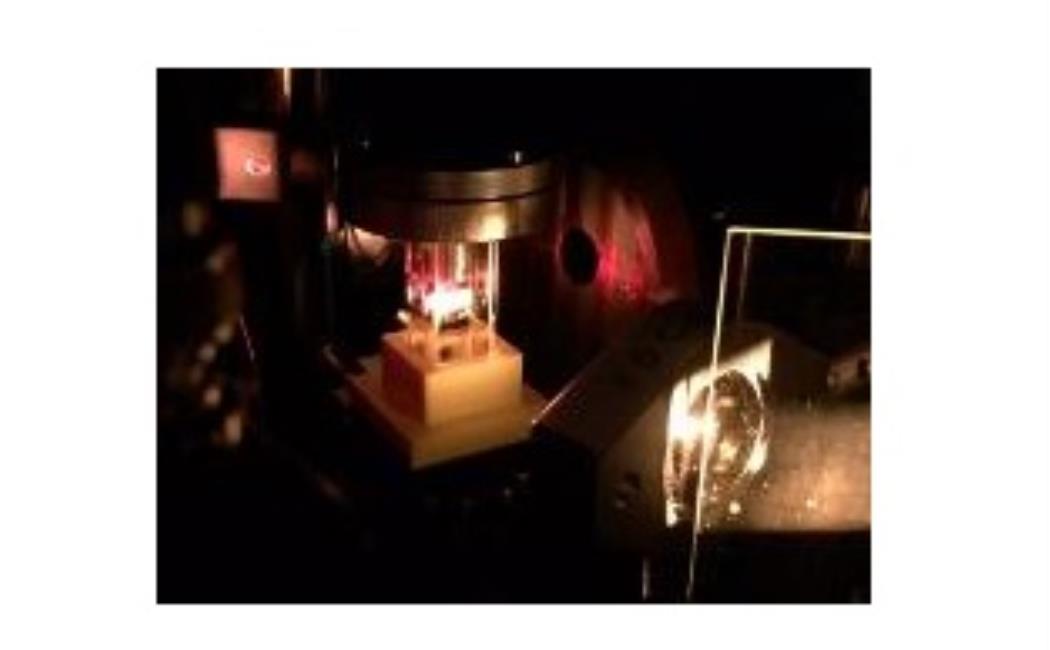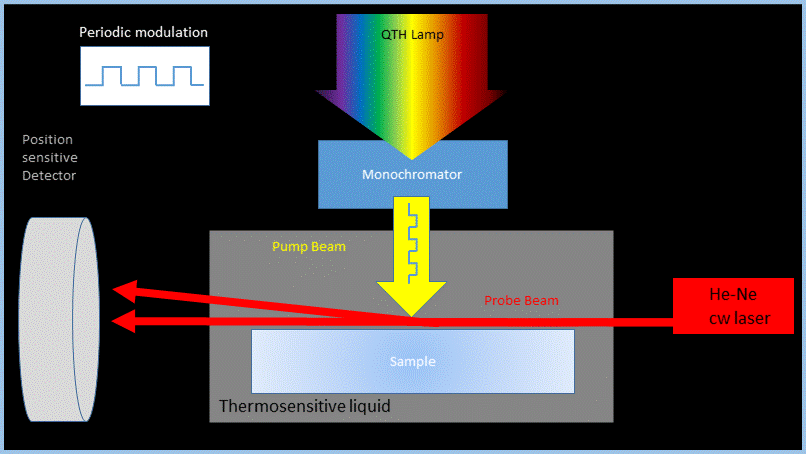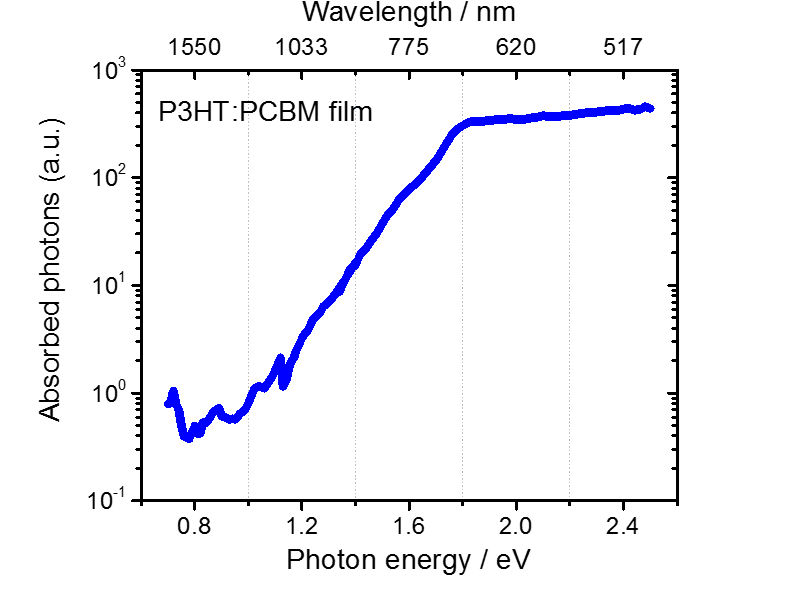
PDS is a non-destructive and highly-sensitive technique that measures the absorbance of semiconducting materials. Its biggest advantage compared to conventional absorption spectroscopy is its high sensitivity which allows detection of sub-bandgap features such as weakly absorbing charge-transfer states in organic semiconductor blends or Urbach tails in inorganic semiconductors.

© Group Laquai
PDS is a pump-probe technique. Pump and probe beams are aligned perpendicular to each other (see figures ). The sample is immersed in a chemically inert liquid which exhibits a pronounced temperature dependence of its refractive index. The sample is excited across the UV to NIR spectral region by light from a combination of a quartz-tungsten-halogen lamp and a monochromator, while the pump light intensity on the sample is modulated by a chopper operating at a constant frequency. As reference, a small fraction of the monochromatic light is sent to a pyro-electric detector which accounts for fluctuations in the pump beam intensity. The modulated pump light creates excitations in the sample that successively relax back to the ground state and simultaneously dissipate heat into the liquid which in turn leads to a modulated change of the liquid’s refractive index. A tightly focused probe beam (He-Ne cw-laser) that is passed through the liquid close to the sample surface is deflected as a function of the liquid’s refractive index. The deflection is registered by a combination of a position sensitive laser beam detector and a lock-in amplifier locked to the chopper’s frequency and finally analyzed by a home-built data acquisition software.

